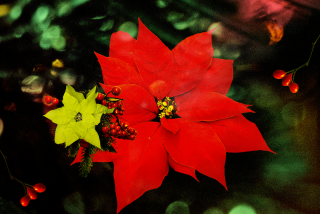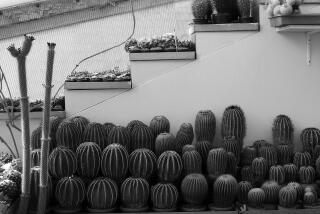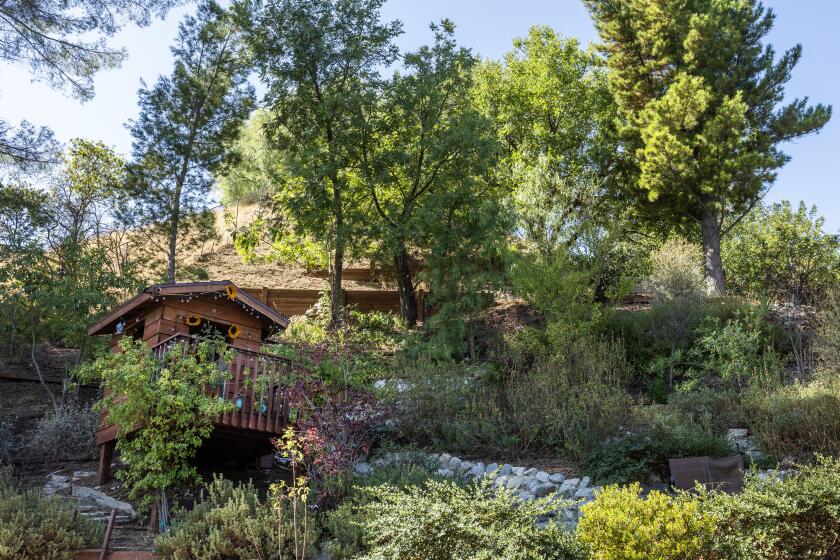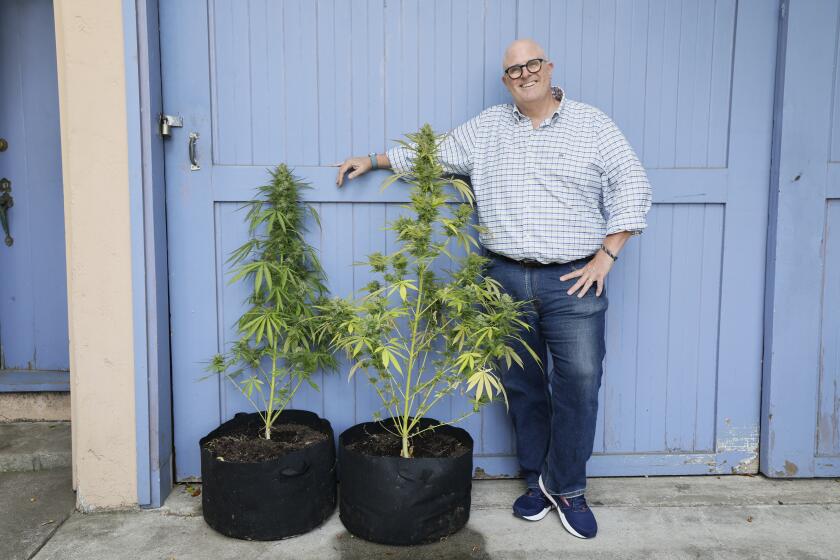Prickly pear cactus: How to harvest fruit without getting poked
Opuntia, the prickly pear cactus, originated in South America, moved into the valleys of the Andes and then north into Mexico and North America. In Southern California, opuntia grows in the coastal scrub, in front and back yards, and at community gardens -- particularly if there’s a large Latino population.
When asked about the huge stands of prickly pear cactus at the Stanford-Avalon Community Garden in L.A., garden founder Juan Gamboa explained that most of the gardeners are from Mexico, where it’s an unofficial national vegetable. It’s even on the flag.
Opuntia ficus-indica is most common type in gardens, easily recognizable for the large, flat, nearly spineless paddles and the red, white or yellow tunas, often called pears (but actually an over-sized berry). Scores of other opuntia exist thanks to widespread hybridization.
After peeling paddles to remove any spines, they can be used raw in salads. They can be cooked for tacos and or as a side dish. They can be steamed, grilled, sautéed, French-fried or boiled, which removes the slime of the uncooked flesh. (That slime, by the way, can be used as shampoo.) In taste and texture they resemble green beans.
To harvest for eating, cut or twist off smaller pads that are the size of a hand and about a half-inch thick, leaving an inch behind to re-sprout.
The oval tunas are like kiwi fruit but with crunchier seeds. Seeding them for juice is easiest with a manual food mill, but watch out for the nearly invisible hair-like prickles. Singe the pear first over an open flame. Jeff Dezell, a landscape designer at California Cactus Center, a nursery in Pasadena, has a trick for removing prickles that pierce the skin: Put a dab of Elmer’s glue on the spot, wait for it to dry, and peel off.
When transplanting prickly pear cactus, handle the plant from the root ball, if possible, and wrap the main stem and paddles in paper. Use gloves that can be discarded.
“Those little hairs can dislodge and float in the air,” Dezell said.
This plant grows easily on its own, making fences where needed and sometimes reaching 20 feet high. It’s simple to propagate. Clip off a paddle close to the main trunk and leave it for a few weeks in the open air, so a callus forms over the clipped section. Then plant it in sandy, well-drained soil. Water it well, then then let the soil nearly dry out. Over watering will lead to rot. Wrinkly paddles indicate the plant is too dry. Feed monthly with a cactus fertilizer for faster growth.
The Global Garden, a look at our multicultural city through the lens of its landscapes, appears here on Tuesdays. For an easy way to follow future installments, join our Facebook page for Gardening in the West. Email: home@latimes.com.






